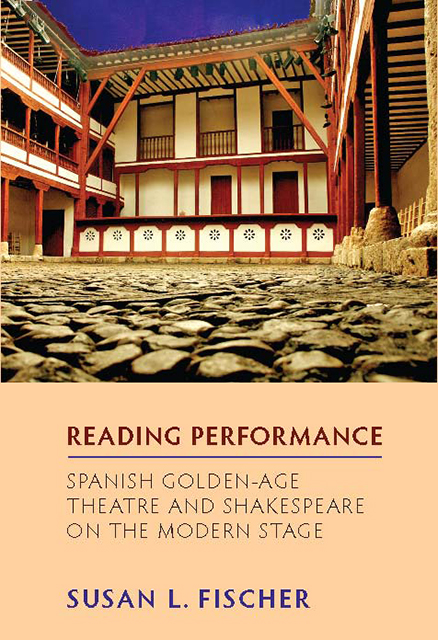5 - Tirso de Molina and “deadly” theatre El vergonzoso en palacio (The Shy Man at Court)
Published online by Cambridge University Press: 28 February 2023
Summary
What were the ubiquitous figures from the labels of “Jolly Green Giant” vegetable tins doing on stage in both Almagro's Corral de Comedias and Madrid's Teatro de la Comedia? For Peter Brook, a production that stimulated such a vexed audience response would be the sine qua non of “deadly theatre,” which can take as easily to comedia as to Shakespeare. Brook, as we recall from Chapter 4, puts his notion of that sort of theatre this way: “We see [Shakespeare’s] plays done by good actors in what seems like the proper way – they look lively and colourful, there is music and everyone is all dressed up, just as they are supposed to be in the best of classical theatres. Yet secretly we find it excruciatingly boring” (Empty 10). At first glance, Adolfo Marsillach’s 1989 mise-en-scène of Tirso's El vergonzoso en palacio might have seemed to fit the bill of deadly theatre. Yet upon further scrutiny of the Vergonzoso’s divers textual features – baroque structure, carnival setting, interior duplications, parodic skepticism, interwoven themes, parallel characterizations, artful imagery, etc. – it became obvious that such a pat assessment of its stage representation was not quite adequate.
Those aforementioned “jolly green giants,” in fact, were meant to be decorous “green palace devils” interpolated into the performance plot: “un complot de diablos juguetones y entrometidos que se mimetizan en el propio decorado adoptando diferentes formas y funciones” (Avilés). They were the outgrowth of the production's “directorial conception,” taken by Brook to be “an image which precedes the first day's work” and which “cannot stem from an intellectual blueprint […] sunk in the whirlpool of theory” (Shifting 6). In the case of the Vergonzoso, the director's conception derived from two popular proverbs: “el hábito no hace al monje” and “al vergonzoso lo trajo el diablo a palacio.” “Del primero,” Marsillach observed, “hemos sacado la columna vertebral de la interpretación, sobre todo del protagonista,” between Mireno's natural nobility (“mi honrado natural,” FA 73; 2.168) and the unnatural outer shell (“corteza,” FA 29; 1.284) of his pastoral existence; or, as Enrique Rull Fernández puts it, between “lo que cree ser y lo que quiere ser” (27).
- Type
- Chapter
- Information
- Publisher: Boydell & BrewerPrint publication year: 2009



